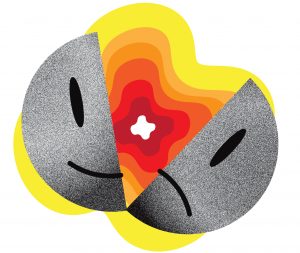UT study finds common link between COVID-19 variants, supports ‘universal’ solutions
April 5, 2023
In a study published in March, UT researchers involved in the development of COVID-19 vaccine research found a common link between the virus variants.
The COVID-19 virus contains a spike protein that it uses to inject itself into human cells, chemical engineering professor Jennifer Maynard said. The study found a common characteristic between the spike proteins of the COVID-19 variants. All variants were found to have an epitope, or part of the molecule, that does not change from one strain to the next. Upon discovery of this pattern, molecular biosciences professor Jason McLellan saw it as an opportunity to make it the target of a universal vaccine.
Maynard said McLellan was originally interested in working on this method with Middle Eastern Respiratory Syndrome, a variant that existed prior to the 2020 pandemic. After seeing their progress, the team began to analyze antibodies that could relate MERS to COVID-19.
Maynard said the spike proteins can be compared to a lollipop. The round part binds its receptors to the surface of a host cell, allowing the virus to attach. The stem then goes from being bent to flipping out and extending, allowing the virus to inject DNA into the host cell.
By targeting the common epitope between the variants with antibodies, it may be possible to prevent the protein from extending the lollipop stem and injecting the virus, Maynard said.
“Generally, most target the top of the protein, and that’s an easy target to find antibodies,” said Annalee Nguyen, a research associate who worked on the study. “The problem is that the top (part) is highly variable in that it mutates over time, and you get a lot of changes.”
UT alumnus Rui Silva said the spike protein is very complex because it is responsible for fusing the membranes of the virus and target cells, and just how dynamic the spike protein was made it a challenge to study.
“If there’s a silver lining for this experience, it’s that science did an incredible job at coming together,” Maynard said. “At UT, almost every lab that does relevant research just instantly pivoted to try and work on this problem and made a lot of great strides in areas that they hadn’t worked in before.”











